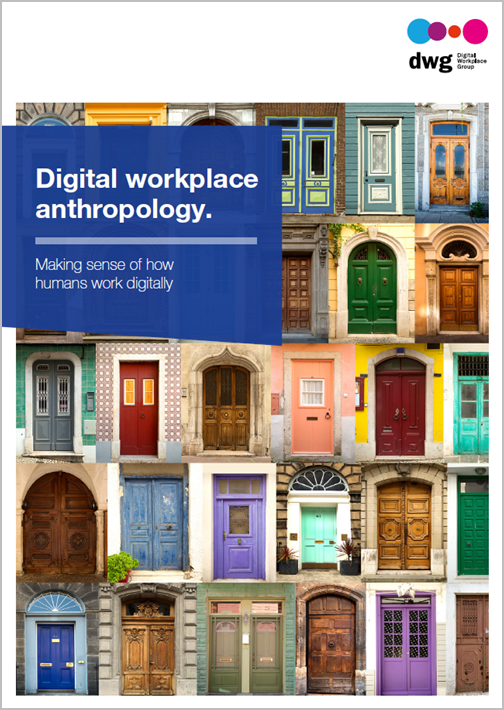My seven lessons from Gartner’s first in-person digital workplace summit since 2019

The last Gartner Digital Workplace Summit was back in 2019. Yes, I know, it took place in the alternate reality of the world before ‘early 2020’!
But now it’s back – so here are my reflections, with seven things I learned from participating in the first post-pandemic in-person Gartner Digital Workplace Summit in London.
This is not a critique of the event (which was excellent) but instead a compilation of what I took away as patterns and trends (and I do love a pattern/trend).
Lesson 1: Putting our people first is now accepted as essential rather than ‘a nice to have’
This has changed due to the pandemic. Before COVID, we had said for years, decades even, that people come first – and yet we didn’t really put that belief into practice. It was mostly lip-service. Then, through the pandemic, we fully experienced the critical role of our people and their intrinsic value, with this appreciation now accentuated in an era of talent shortages. This people focus represents a significant shift in the company mindset.
Related resource:
Lesson 2: Get ready for a decade of digital workplace technology explosion
It’s 1998 all over again, technology-wise! We have entered a wave of innovation in digital workplace tools, underpinned by, but not exclusive to, AI. In fact, we’ve had AI for decades but when ChatGPT launched in late 2022, we could finally experience the power of AI directly. What had until now been mostly a concept became an experience. The ensuing wave of new technology services and applications in work will be profound and dramatic in scale.
Related resource:
Pace yourself for the inevitable AI chat rollercoaster
Lesson 3: Hybrid working has become normalized – and the physical workplace (in turn) needs to be adaptive, digital and dynamic
Working where we want – most of the time – has now become normal. This is true for many administrative/functional roles, such as call centres, as well as knowledge roles. But when we are in physically in the office or remodelled workspace, the space needs to support a far wider range of people and roles.
We still need and want to be together regularly. And when we are together, we gain from meaningful social and learning connections rather than from simply spending the day working in a shared space but working solo. The workspace must be digitally adaptive and rewarding so that we can appreciate why we just made the commute.
Related resource:
Hybrid work reimagined
Download the free report excerpt
Lesson 4: Sustainability has arrived and will grow significantly in its centrality in work
Sustainability mattered a great deal in 2019, but now the urgency and significance for organizations has been transformed – and this shift will grow and deepen still further. All aspects of how work happens will have a sustainability dimension, and the net zero targets that are common across organizations will prompt us to ensure we are always improving the ecological impact of our companies.
Related resource:
Lesson 5: Change management is now front and centre as a new era of technology arrives
Historically, technology change investment was allocated almost exclusively to the technology itself, with adoption and change management just an after-thought. We would then attempt to mop up the mess – but that is always harder to repair retrospectively.
Now the technology itself – whether it be generative AI such as ChatGPT or something else – is straightforward enough to switch on but the real value lies in how people and teams are introduced to and supported around each new tool or service. Change management will be at the heart of this technology adoption wave, particularly since people are understandably concerned that the latest new apps will steal their jobs.
Related resource:
Change management in the digital workplace: Nine tips for success
Lesson 6: Social, political and ecological challenges must be included in our corporate missions or employers will be seen as ignoring the concerns we face in our work and lives
It used to be possible to operate within a vacuum, where the outside world was largely ignored, but those days are gone. The threats we face collectively as a species are now part of the fabric of our lives. When companies are engaging with their people, they must be seen to be aware of and active in helping the company positively impact the world around us for the better.
Related resource:
Think like an anthropologist to get the best out of your digital workplace
Download the free report excerpt
Lesson 7: Digital workplace leaders must occupy ever more senior and strategic positions in an AI-amplified world of work
Every CEO is thinking about generative AI, as are the rest of the C-suite. All have questions and concerns. This offers a new window of opportunity for DW leaders and their teams to take on a guidance role as new emerging technologies come on stream. For example, someone will step forward in your organization to enable an enterprise version of ChatGPT to take its place in work – and that person should be you.
Talk to us about…
Categorised in: Digital workplace



